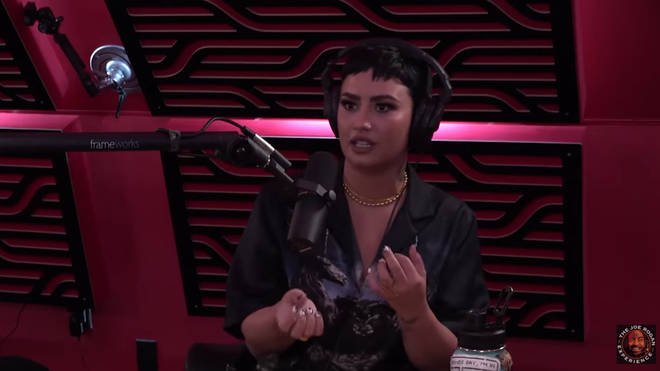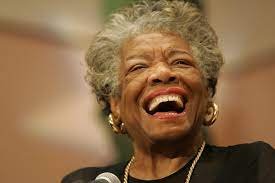Carl Jung said:
“Until you make the unconscious conscious it will direct your life and you will call it fate.”
He was right.
If you simply notice what you aren’t noticing—rather, what you are choosing not to notice—to AVOID, bingo!, you will be crystal clear on what you need to work on.
It’s not easy work.
Credit: istockphoto.com
But if you are sick and tired enough of the habits that are stealing your precious vital energy, then you must change. Coaches orders.
It sounds so obvious, because it is, but most people would rather stay in their comfortable little shells of misery than break out and see what life really has to offer. To stay in a spiral of shame rather than unfold into infinite possibility.
With a team, a coach, a set of friends, a tribe in your circle who is voting for you to break out, you are in good hands. I am accepting 1:1 clients now who are ready to break their negative habits and you can click here to apply.
Now back to the blog.
First, let’s define a negative habit.
Habits are neutral but for the sake of teaching I am using the word ‘negative.’ In my view, a negative habit is basically an addiction, which is defined by the American Society of Addiction Medicine (ASAM) as: ‘a treatable, chronic medical disease involving complex interactions among brain circuits, genetics, the environment, and an individual’s life experiences. People with addiction use substances or engage in behaviors that become compulsive and often continue despite harmful consequences.’ The National Institute for Health (NIH) describes addiction as: ‘a chronic, relapsing disorder characterized by compulsive drug seeking and use despite adverse consequences.† It is considered a brain disorder, because it involves functional changes to brain circuits involved in reward, stress, and self-control. Those changes may last a long time after a person has stopped taking drugs.11’
Let’s pull a few key things from these dense definitions:
Addiction is treatable.
Addiction involves functional changes to brain circuits.
Addiction emerges when the ‘user’ continues to use despite harmful consequences.
I want to teach you how we can use this knowledge to overcome what sometimes feels like an impossible habit to break.
As the great Joe Dispenza guides the transformer in Chapter 11 (“Prune Away The Habit of Being Yourself”) of his book Breaking the Habit of Being Yourself: you must:
-recognize what is not working for you/is working against you
-admit and declare the person you were, the mistakes you made, and why you want to change your life
-surrender your mind and its intention to a greater power which will resolve your limitations and remove your mental blocks
In this order.
Unfortunately, what I see when working with people who want to change their negative habits, is…oddly enough, they’ve become addicted to the negative consequences. Even though it hurts, it stifles, it subdues, it overwhelmingly stresses them out, or they just aren’t making progress the way they dream fit, they stay the course.
What is this all about?
I have a theory.
It’s really all about homeostasis. Whether the conditions are “good” or “bad,” “healthy or unhealthy,” “life-robbing or life-giving,” we like getting used to particular pattern of emotions. The predictability of it is comforting. So we stay.
I see this across the board—through all facets of life.
The wife who stays in an abusive relationship (verbal, physical, etc.).
The woman who continues to slog away for an hour on the treadmill every day, never touching a dumbbell.
The secretary who wants to own the damn office who never speaks to her boss about a raise, upgrade, or connections to a job where she can exude more power and creative control.
The single woman who wants an intimate, committed relationship but waddles in her own learned helplessness by sitting on the couch swiping on dating apps hoping to, voíla, meet Prince Charming.
The ritualistic night-time wine drinker who complains every single next morning about how tired, foggy, and unhappy she feels.
Again, what in the heck is happening here?
PEOPLE GET COMFORTABLE IN THEIR HABITS, NEGATIVE OR POSITIVE, AND DON’T WANT TO PUT IN THE UNCOMFORTABLE WORK OF CHANGE TO GIVE THEMSELVES THE LIFESTYLE THEY HUGELY DESERVE.
That’s the cold, hard, forthright TRUTH.
So, as I always transparently preface my clients with before they embark on the journey into positively transforming their lives: IT WILL BE UNCOMFORTABLE, AND IT IS POSSIBLE TO CHANGE.
I’ll share a few examples of people who have broken the addiction of being themselves (you might recognize them).
Demi Lovato
From a childhood thrust into the limelight—which repressed some feeling of “being used for her talent,” to heroin overdose, cocaine abuse, and alcoholism, to exercise addiction and eating disorders, to three drug-induced strokes that led to brain damage, to suicidal ideation beginning at age 7, to breaking free of any sexuality boxes, Demi Lovato has had a lot of addictions. Yet she broke the habits that were weighing her down. As aforementioned, it required a team of people who wanted to see the healthy version of her (rehab facilities, the right friends, mentors, etc.). Point is, she broke the habit of being herself. She bravely admitted: “One of the hardest things was learning that I was worth recovery.”
I loved this Joe Rogan Experience podcast episode, an intimate conversation Demi.
Adele
Adele has opened up in interviews and through her lyrics about her battles with depression (esp. postpartum depression). She turned to alcohol and spent many days in bed. She describes one of the turnkeys of her healing journey as: “Anything that could soothe my anxiety, I threw myself in headfirst. I travelled anywhere where there's meant to be brilliant energy'.”
Credit: time.com
Maya Angelou
Maya is one of the greatest female authors of all time. Few people know that she was also one of the most banned authors in America. Specifically, for publishing her honest depictions of her experience of adversity, trauma, and abuse in the South in her first novel I Know Why The Caged Bird Sings. In such an audacious, courageous way, she broke her own addiction to the “smallness” and “wrongness” society tried to pigeonhole her into by breaking out her voice of how she truly felt, what truly happened, and how she overcame the “habit of being herself,”—that is afraid of her own power, which society conditioned her to be. In the last scene of her book, she does a personality-shattering action— lovingly holding the baby boy she has given birth to, no longer following the false fucking narrative that she is “wrong, untrusting, menacing and upgrading her body forever-more in the acknowledgement that she IS “loving, worthy, and whole.”
What do these three humans’ journeys to break their addictions have in common?
They Acknowledged Their Innate Worth.
Demi’s decision to choose to recover because she was worth it. I hear Dr. Joe Dispenza saying “feeeeeeeeeeeeel your precious heart” here.
They became Open To The Unknown.
Adele’s free-flowing permission to follow anywhere she sensed brilliant energy! Dr. Joe Dispenza would describe this as allowing yourself to feel the love that is in and all around you.
They Changed Their Personality.
Maya Angelou changed how she thought, how she acted, and how she felt via the alchemical process of noticing her current thoughts, her current actions, and her current feelings and choosing new ones as she wrote her elegant, evolutionary works.
Like I said, to do ANY of these things is hard work. It is the work of the person who is choosing to be their own hero.
So you will have to ask yourself if you are willing to do that?
But…I share these examples to show you just how very possible it is to break your negative habits.
Alright, alright…so now you want to know how to do it yourself.
You have the formula right before you (look above):
Acknowledge Your Innate Worth.
Become Open To The Unknown.
Change Your Personality.
To get started on acknowledging self-worth, feeeeeel into your heart and how much space the space in your heart takes up in space. IT. IS. INFINITE. Really being with that expansive feeling of love will remind you that you are worth it…you have a huge heart.
To get started on becoming open to the unknown, you must go from being somebody, someone, something, someplace, in some time to being no body, no one, no thing, in no place, and in no time. Then your world of possibilities jars wayyyyy open.
To get started on changing your personality, you must change the three components of your personality:
-how you think
-how you act
-how you feel
How, how, how?
First, you gotta notice what you are currently thinking, what your current actions are, and what your current “most of the time” way of feeling is. If you aren’t satisfied, choose differently.
Engaging in these steps attacks the three transformational opportunities I pointed out in the definitions of addiction:
It treats the root of the negative habit by becoming aware of the current habits (in thought, action, and emotion), and subsequently, changes the brain circuits in a way that fires new thoughts, new actions, and new feelings for you to become the person you choose to be.
This has been a primer on how to break negative habits/addictions.
It is both smart and resourceful to include a team, a coach, a set of friends, a tribe who is voting for you to break out and supports your decisions. Then, you are in good hands.
If you’d like my help breaking some of those negative habits in your life (which you absolutely can), I am accepting 1:1 clients now who are ready to break their negative habits and you can click here to apply.
In Great Love,
Coach Abby





